Machine Learning – L1 & l2 Regularization
Table Of Contents:
- What Is L1 & L2 Regularization ?
- How Controlling The Magnitude Of The Model’s Coefficients, Overcome Overfitting ?
- How Too Large Coefficients More Likely To Fit Random Noise In The Training Set ?
- What Is Sparsity In The Model ?
- How The L2 Regularization Handle The Larger Weights ?
- Explain With Mathematical Example How The Weights Are Getting Zero In L1 Normalization ?
- Why For L2 Regularization Weight Can’t Be Zero Explain With One Example ?
(1) What Is L1 & L2 Regularization ?
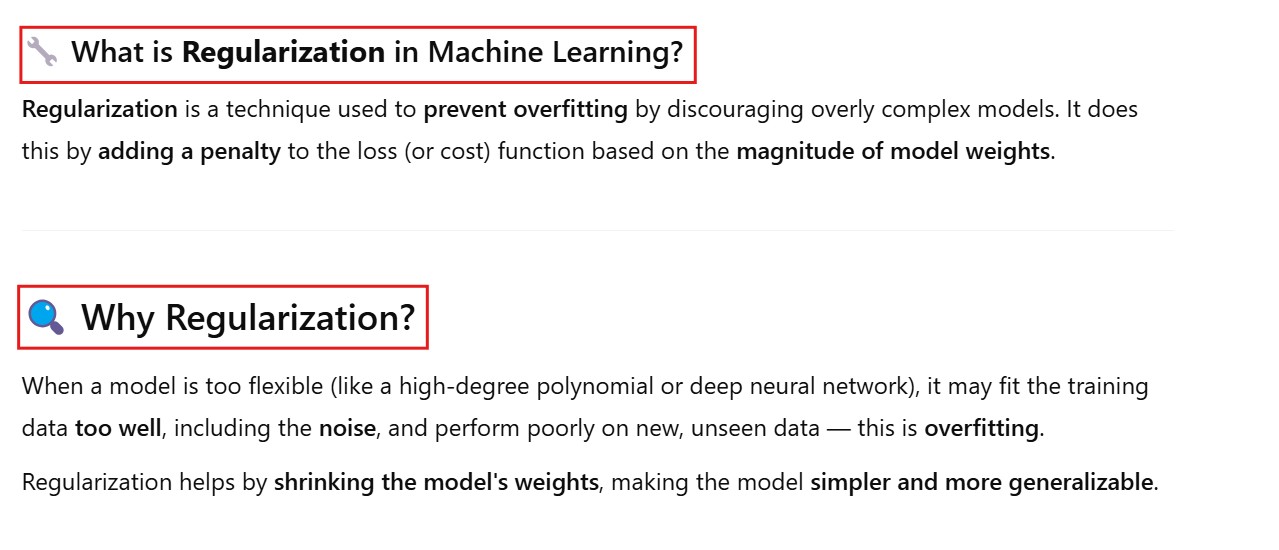
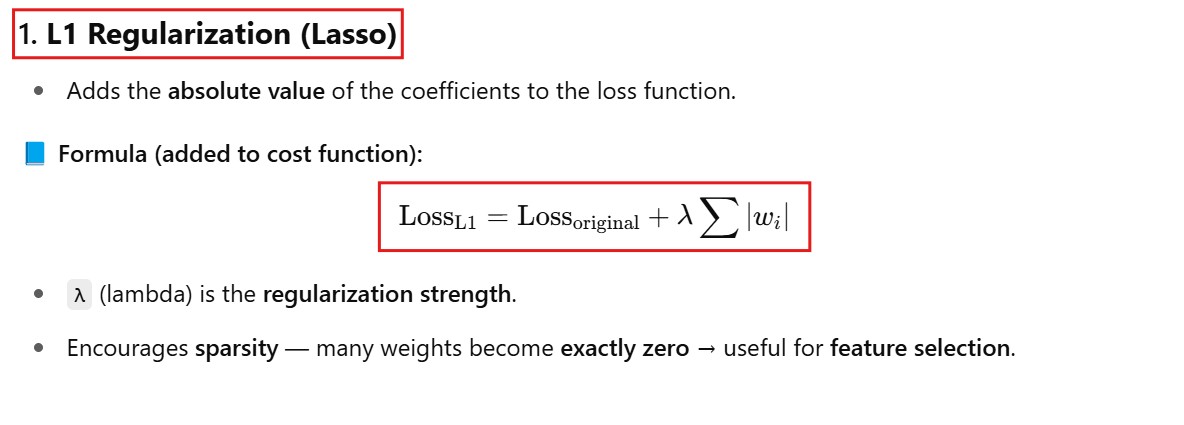
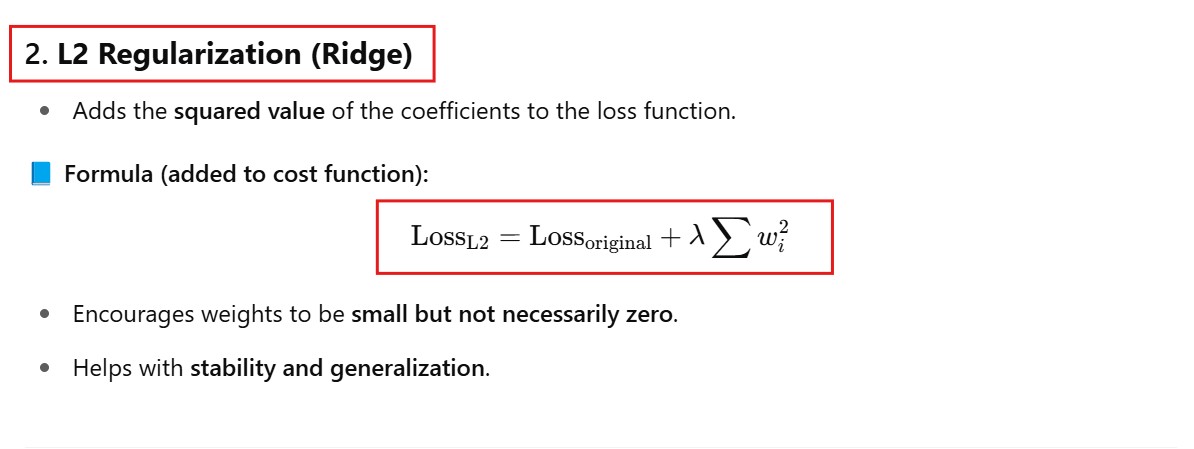
(2) How Controlling The Magnitude Of The Model’s Coefficients, Overcome Overfitting ?
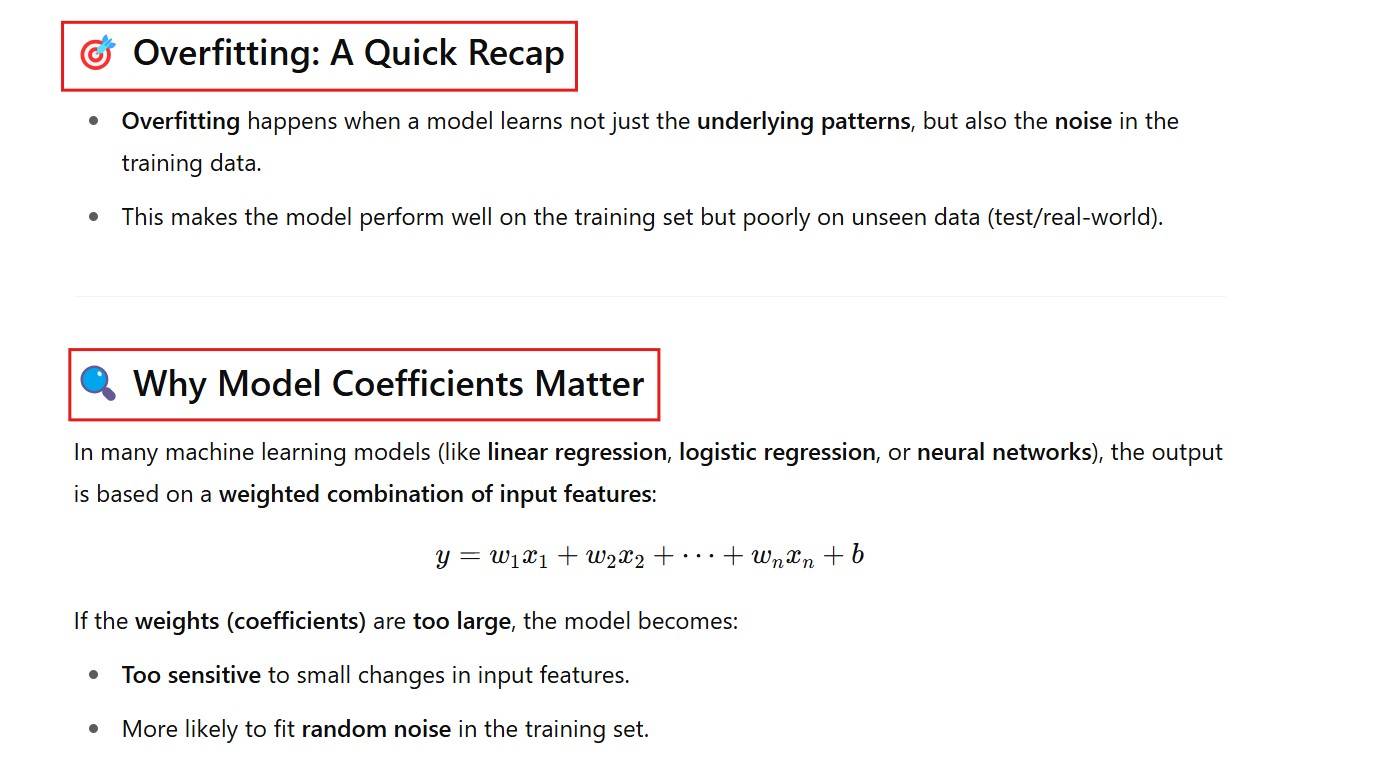
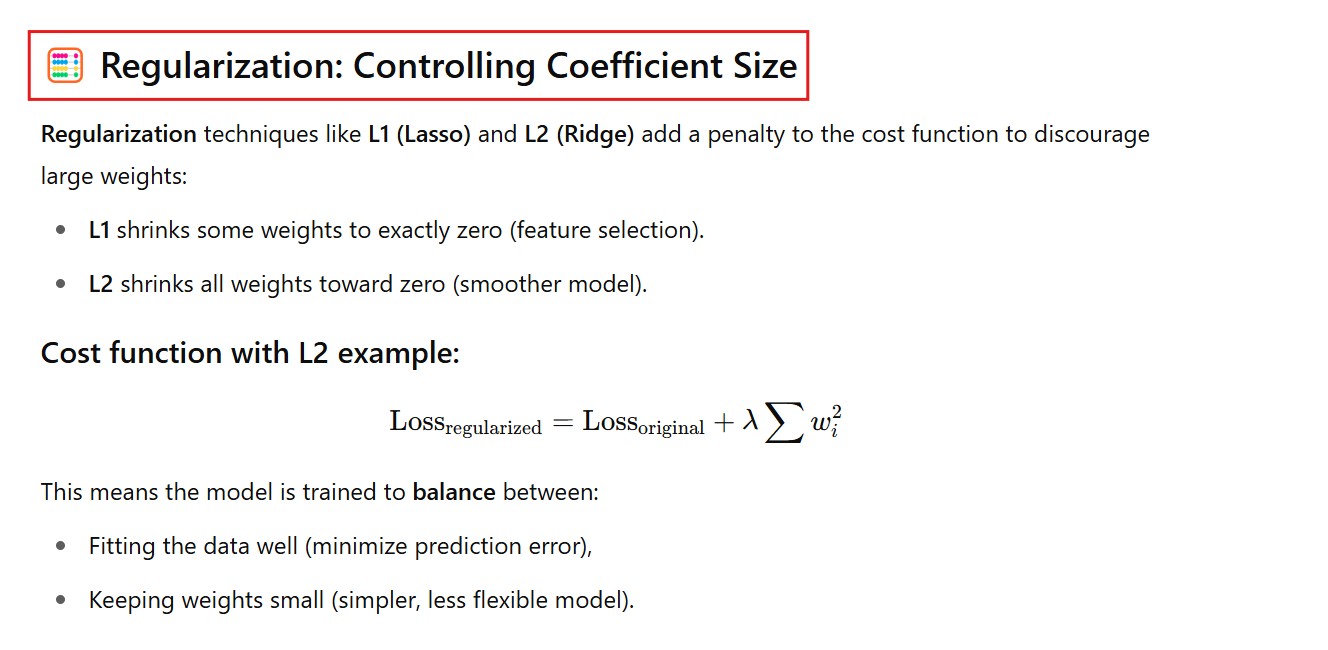
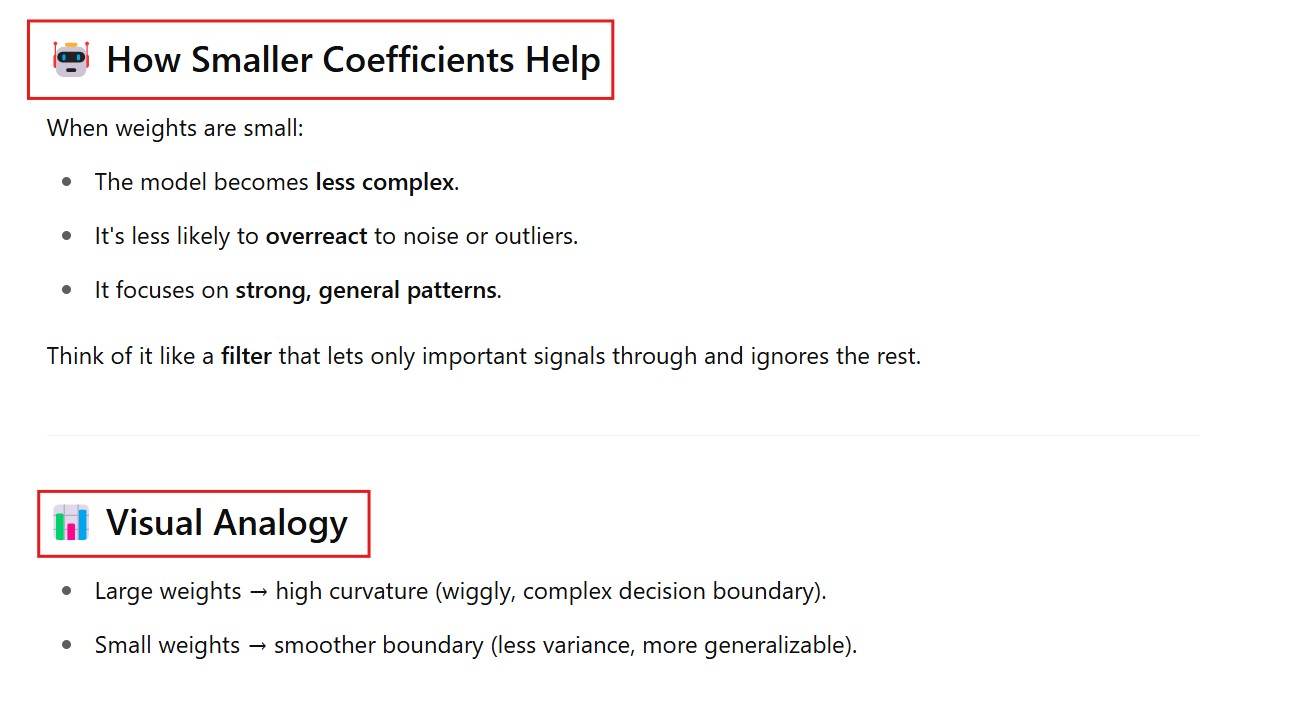
(3) How Too Large Coefficients More Likely To Fit Random Noise In The Training Set?

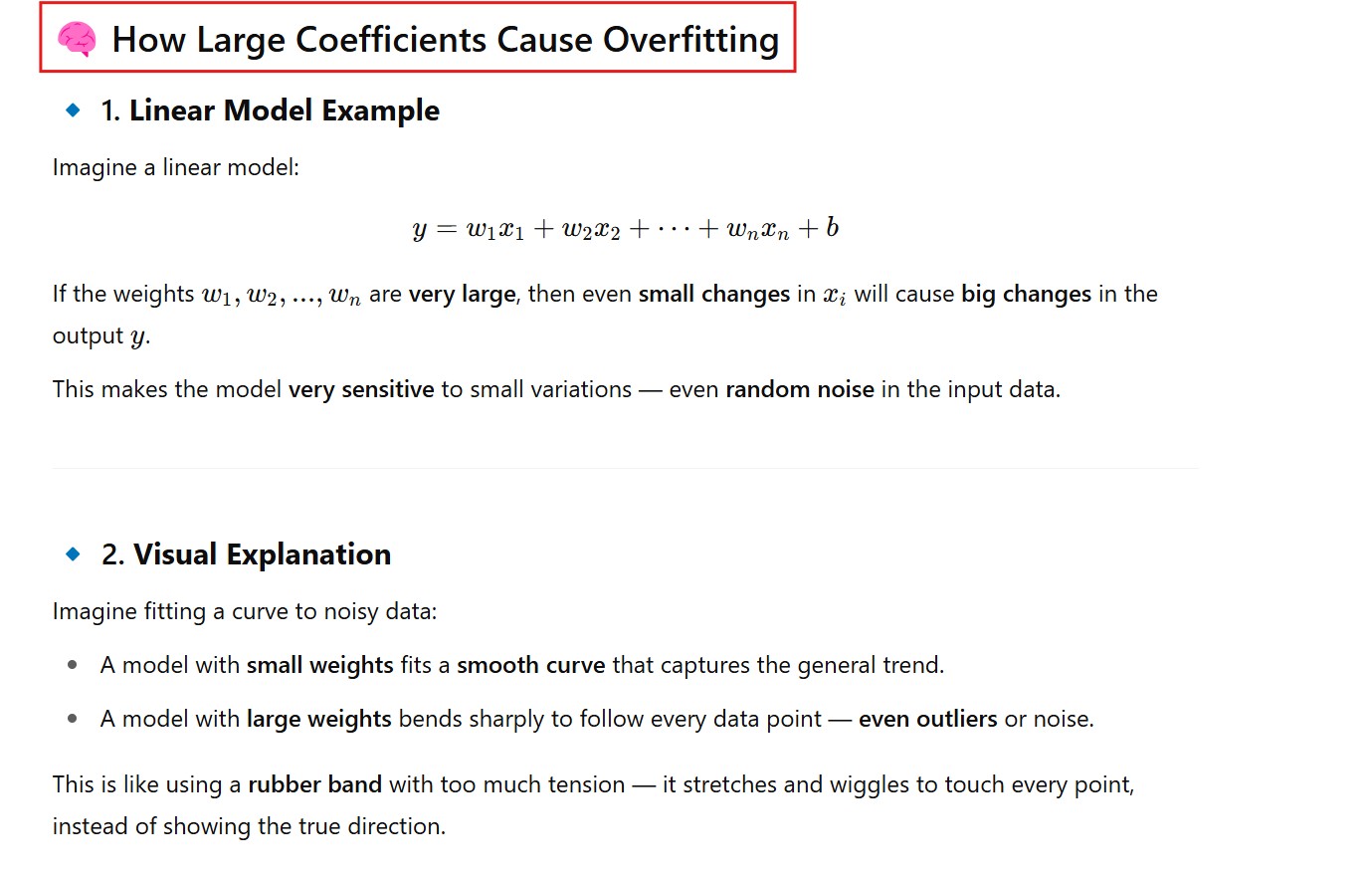


(4) What Is Sparsity In The Model ?
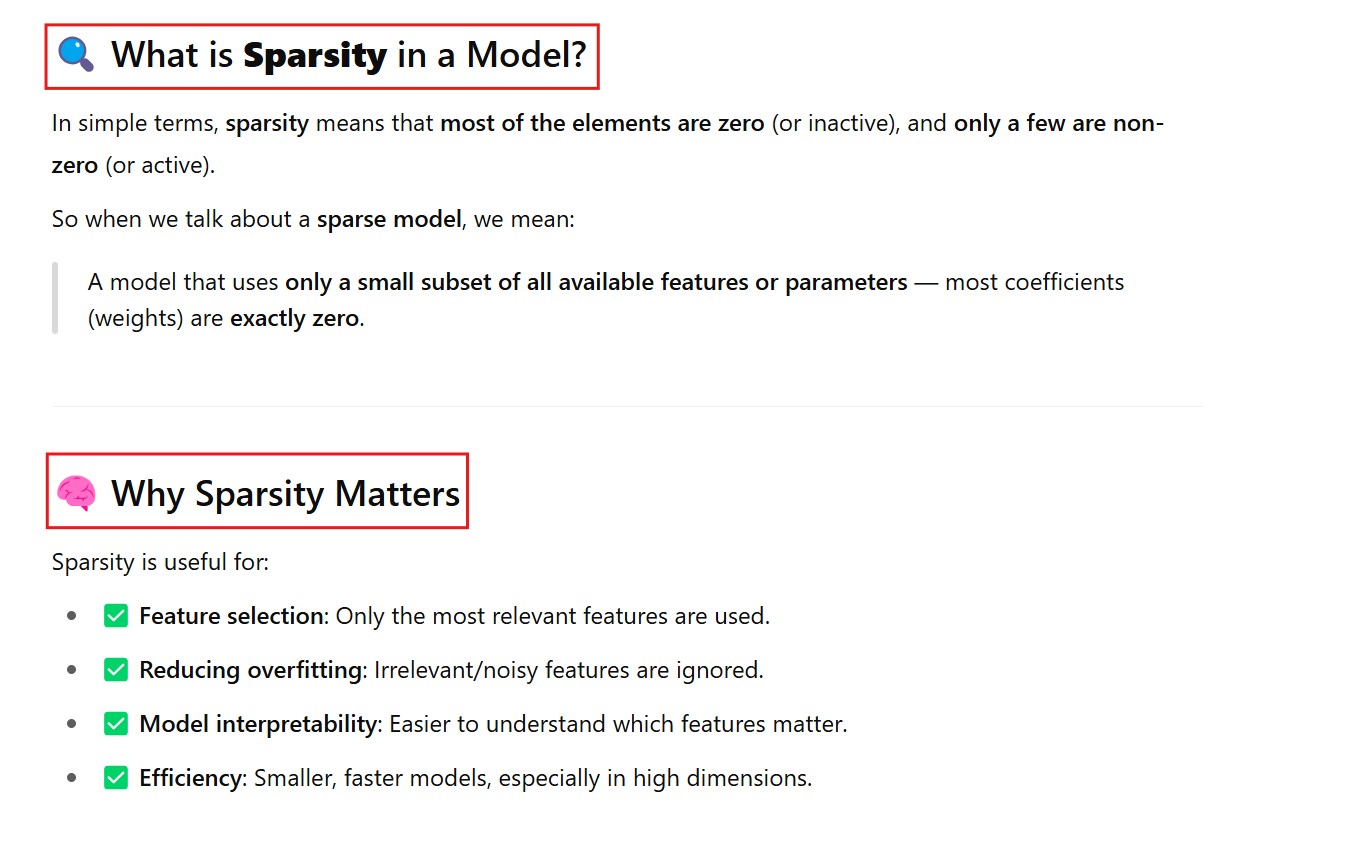


(5) How The L2 Regularization Handle The Larger Weights ?
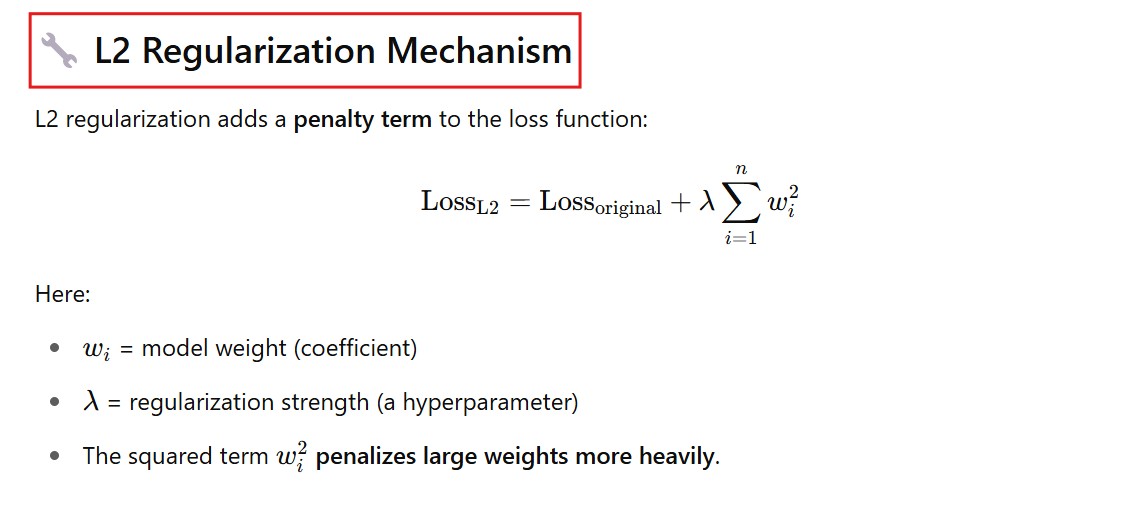

How L2 Shrunk The Weights?
- As you can see in the above equation is that, as the weights reduction is directly depends on the weight itself, if it is a bigger weight it will be reduced in bigger way, if it is a smaller weight it will be reduced in a smaller way.
(6) Explain With Mathematical Example How The Weights Are Getting Zero In L1 Normalization ?

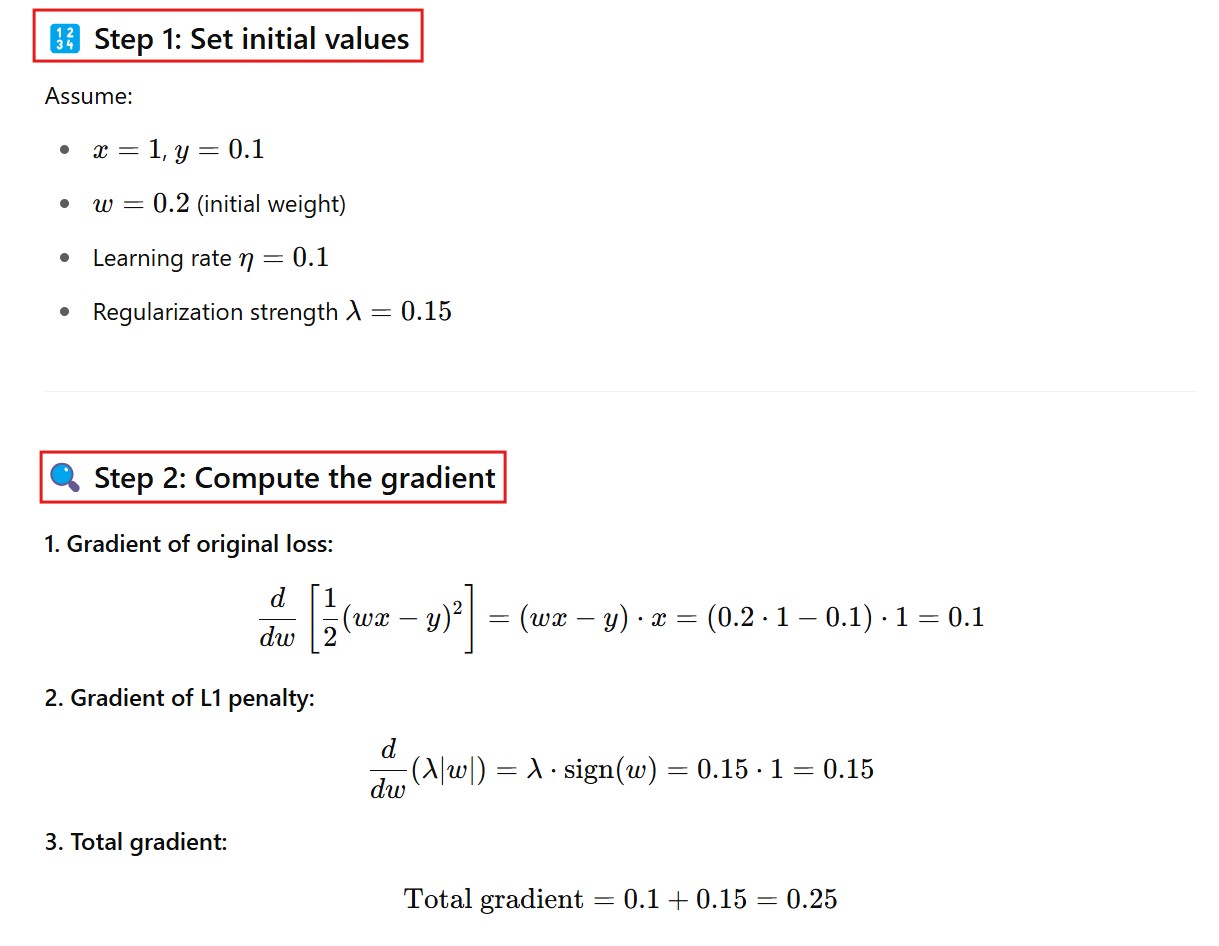


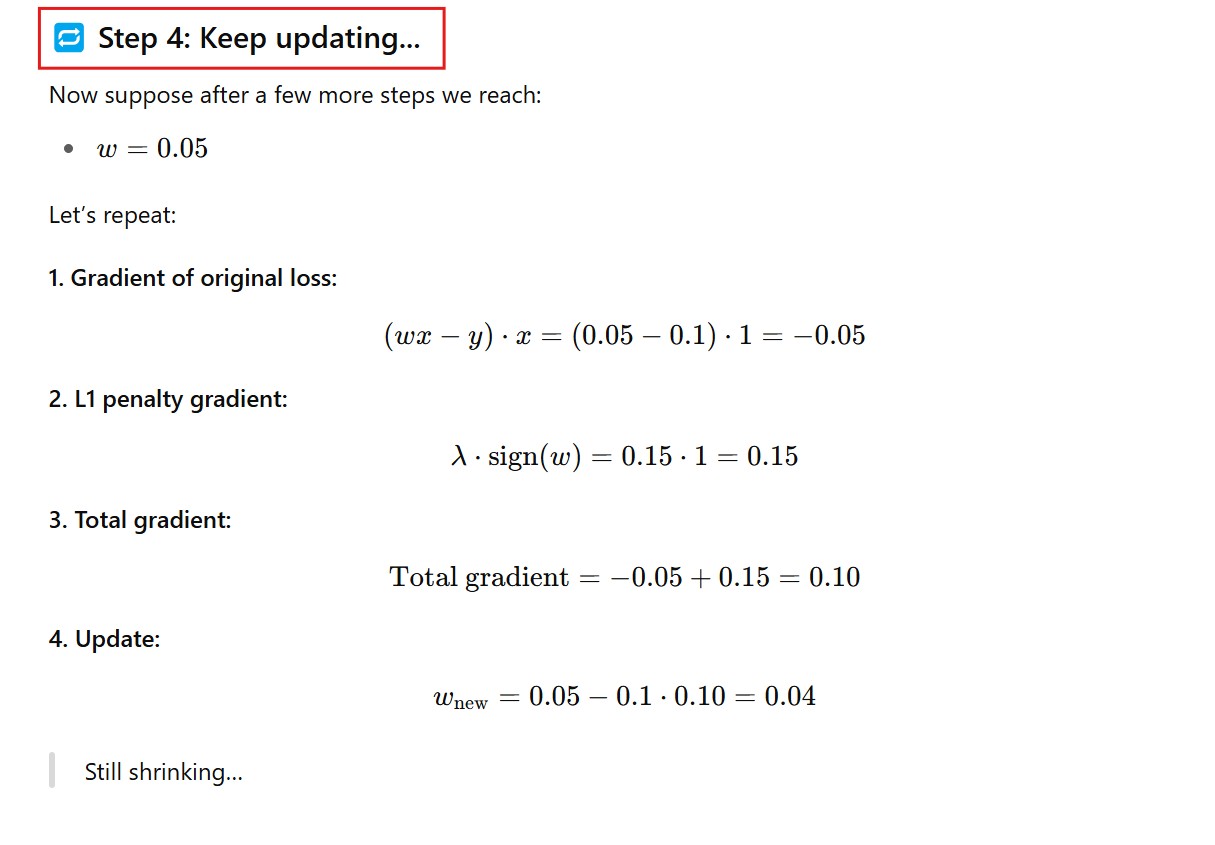
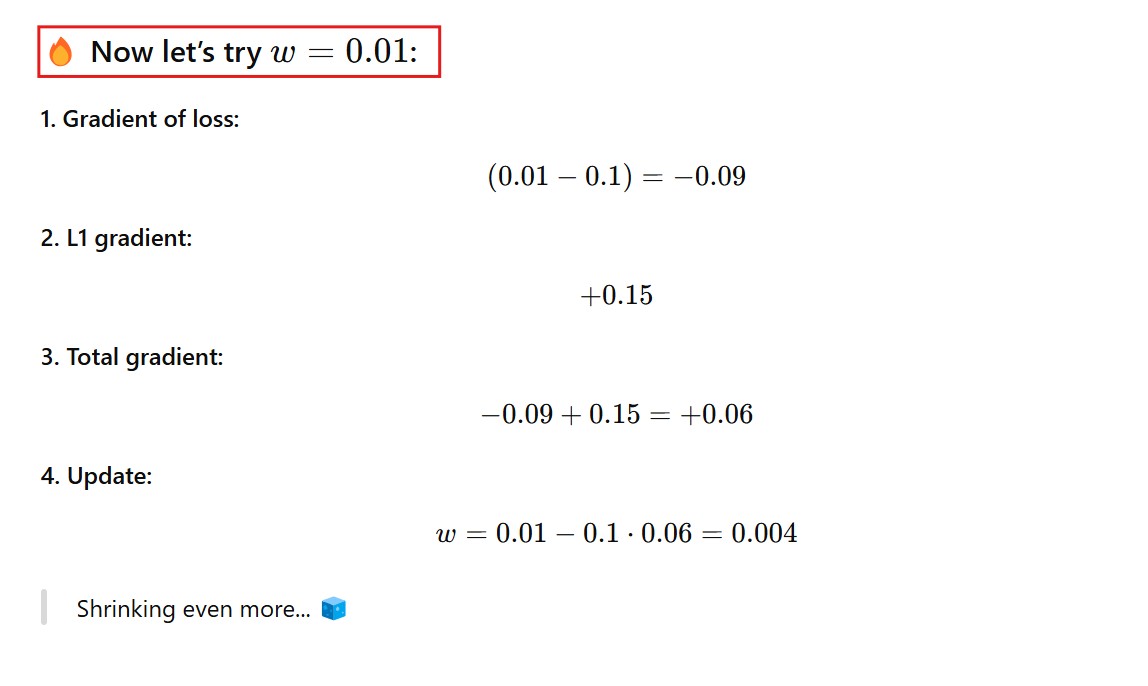
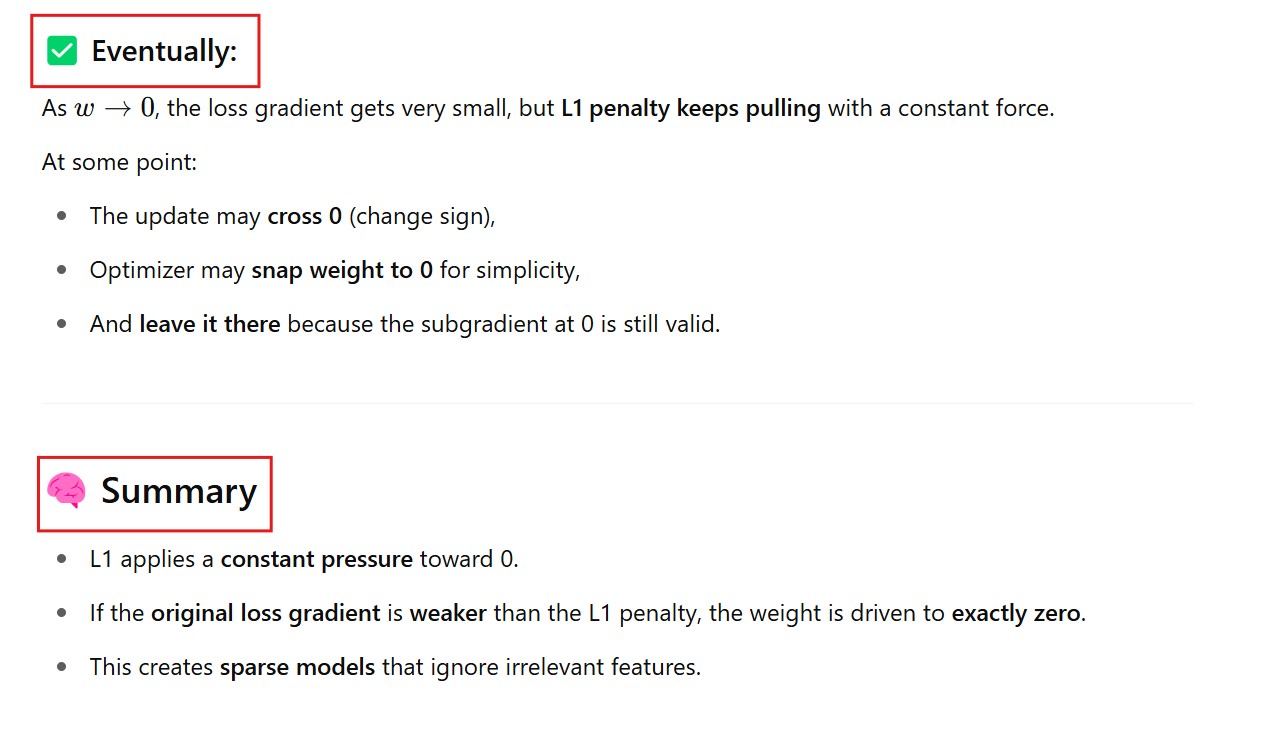
- At w = 0 , the optimizer stops updating the weights, because it fluctuates between small positive and negative value around the weights.
- Hence it will take the step to keep the weight at zero and stop changing it again.
(7) Why For L2 Regularization Weight Can’t Be Zero Explain With One Example ?




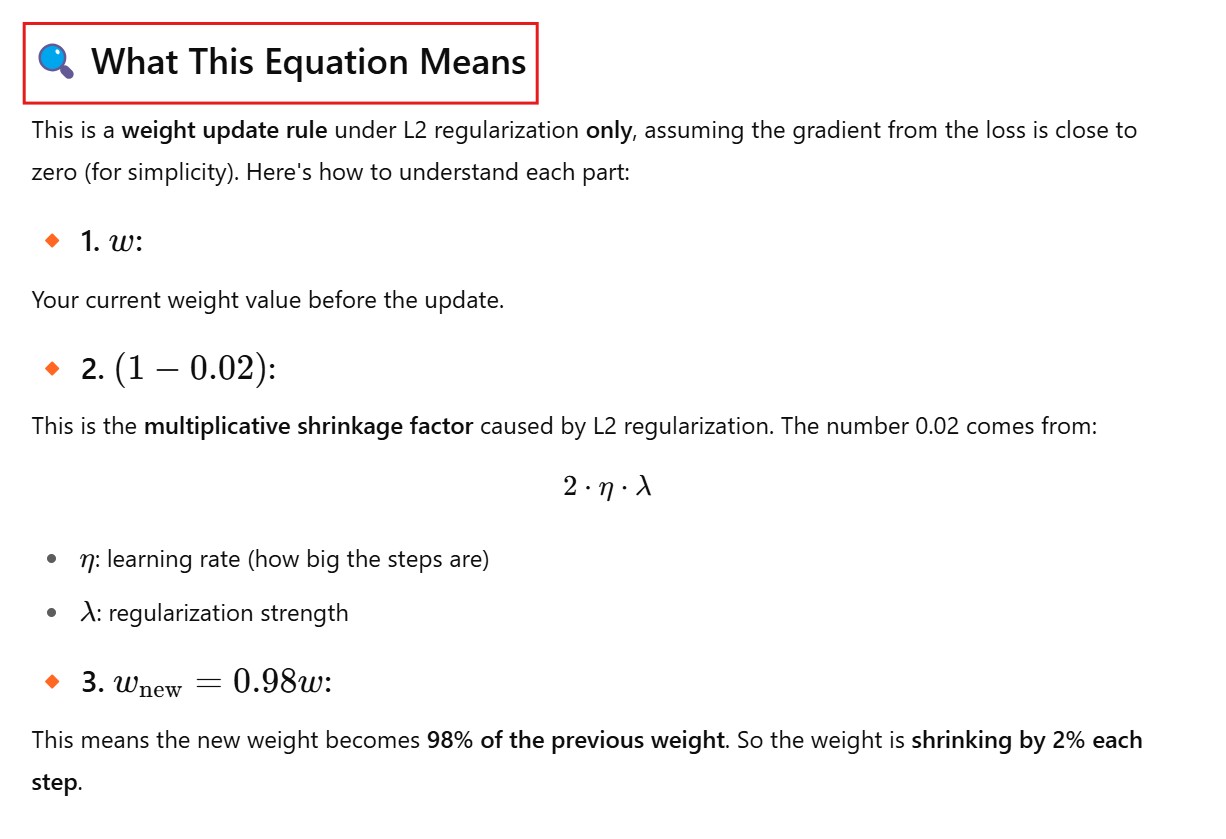

- From the weight update equation we can see that the new weight will never become zero for w = 0.
- because w(new) = w(old) – learning rate * Gradient Loss.
- There will be still w(old) present when the Gradient Loss (2 * Lambda * w) can be zero.

